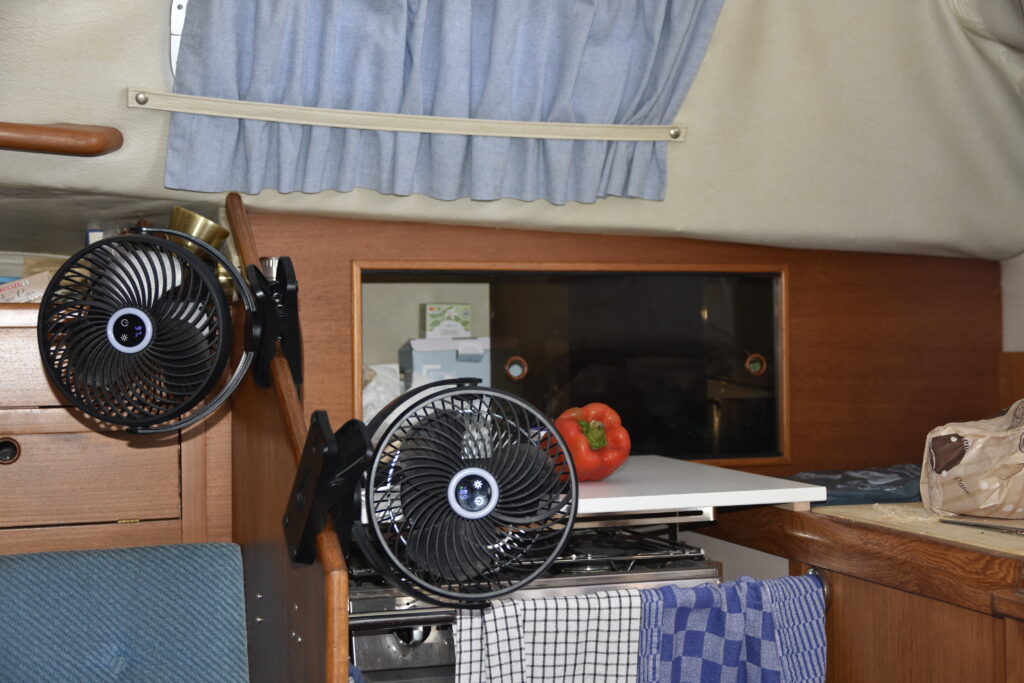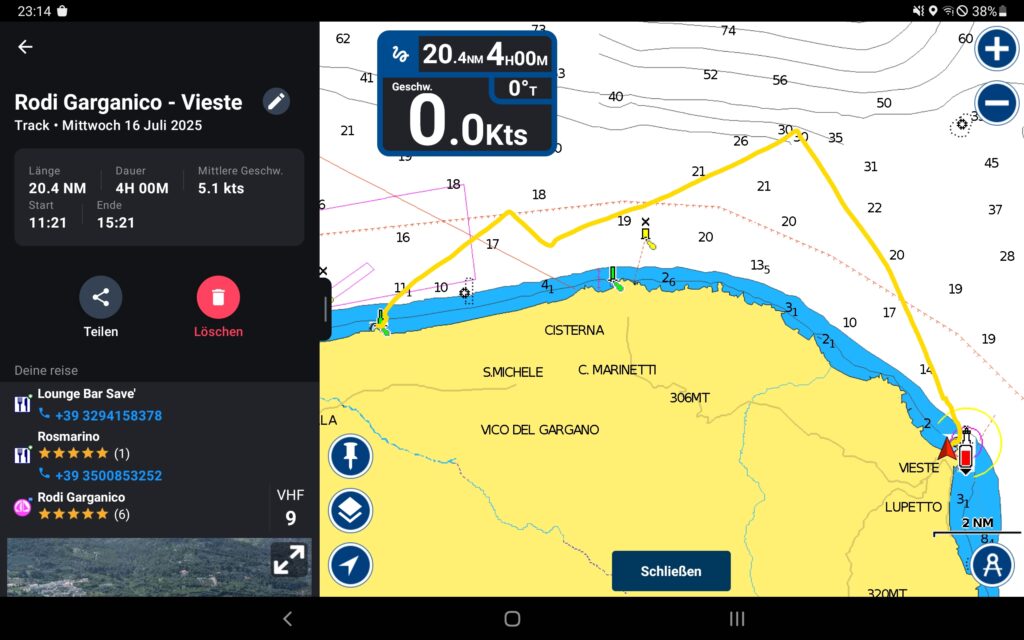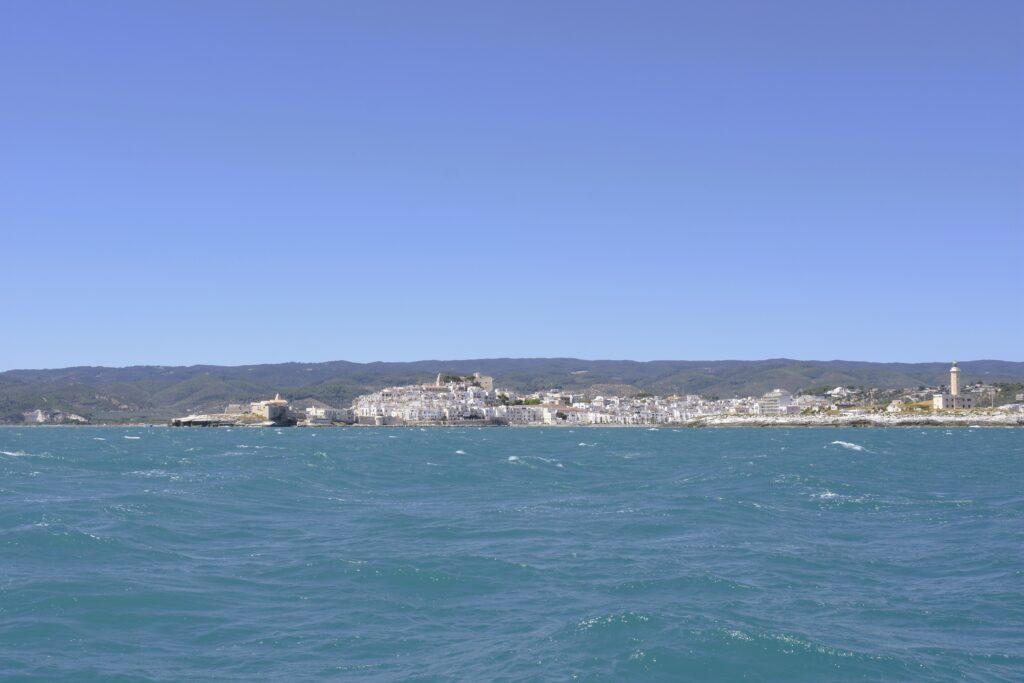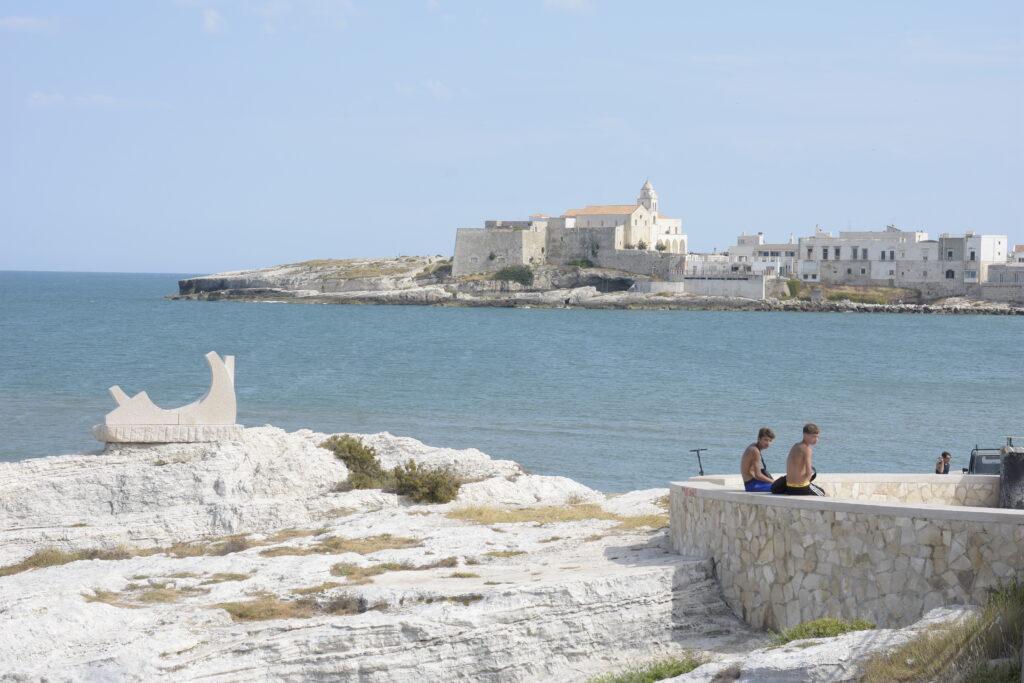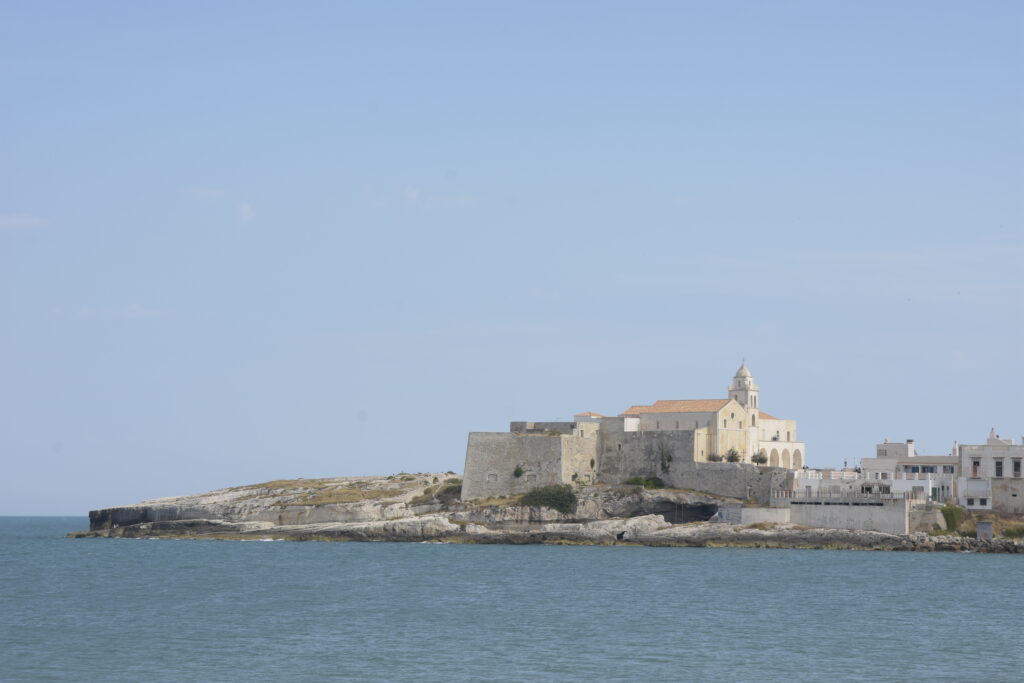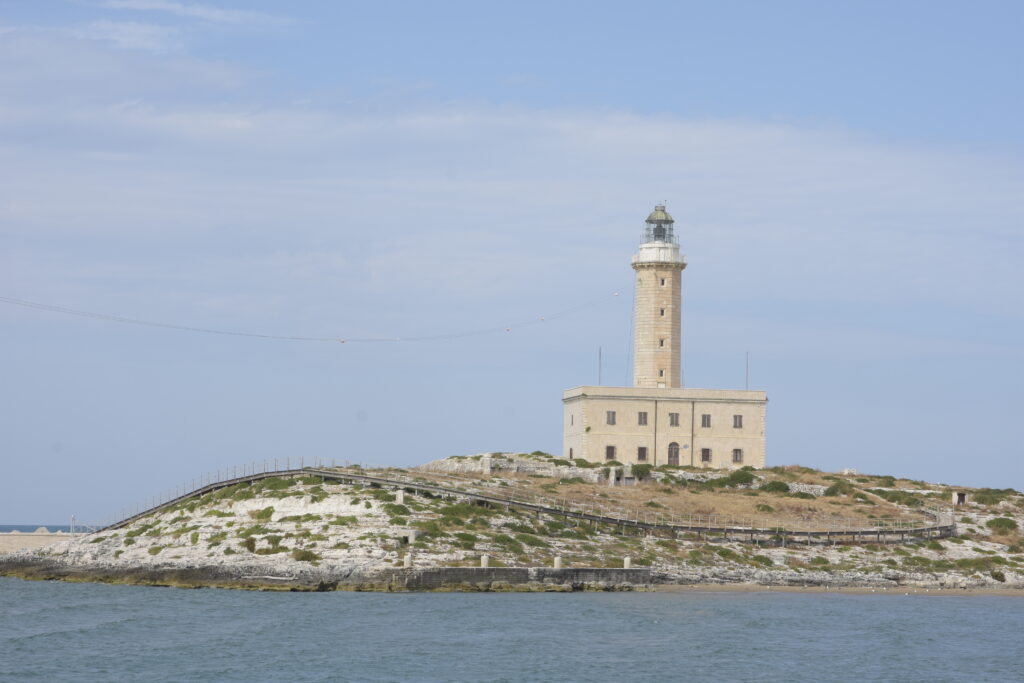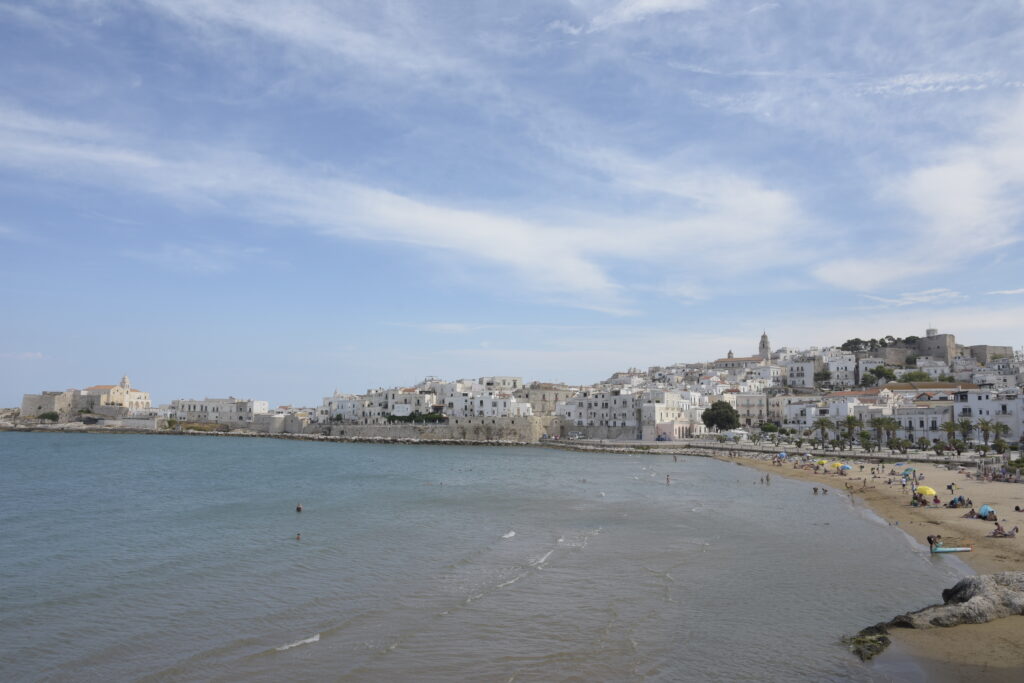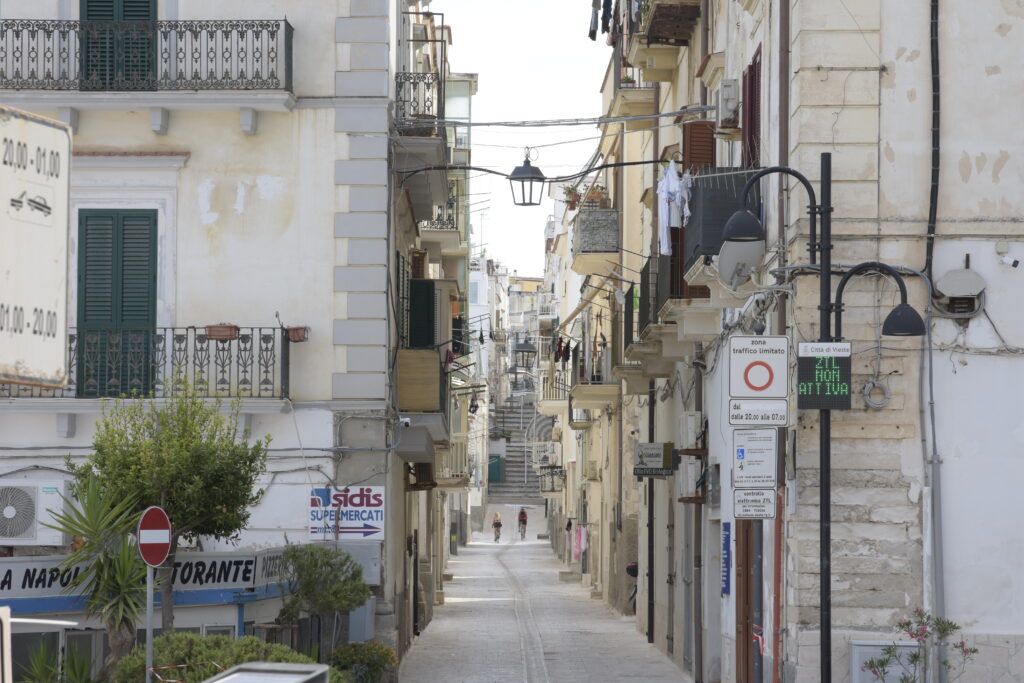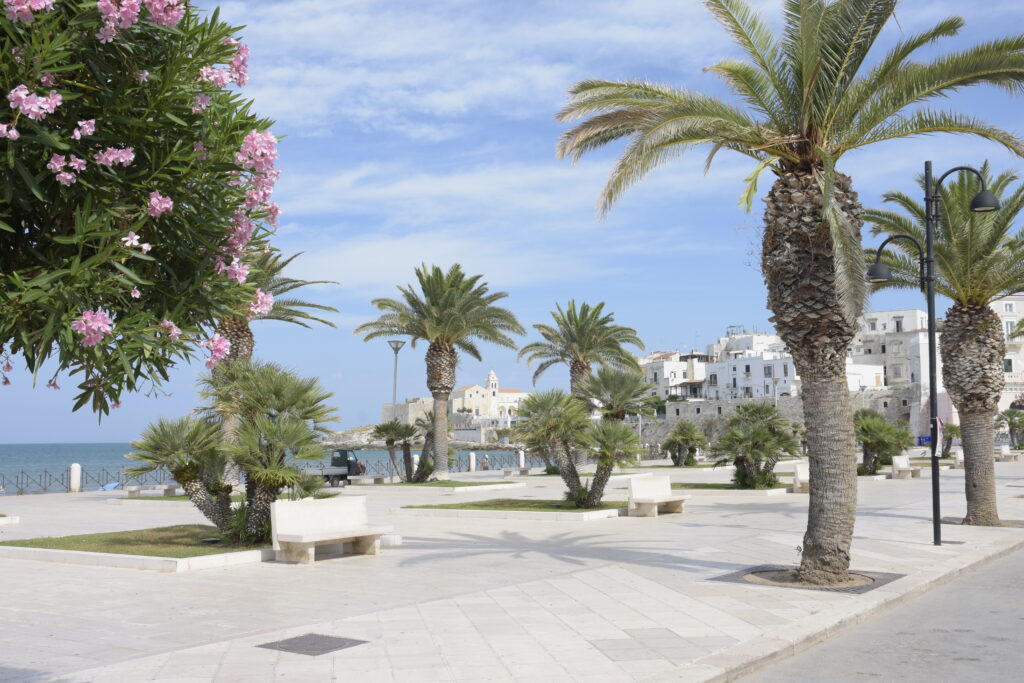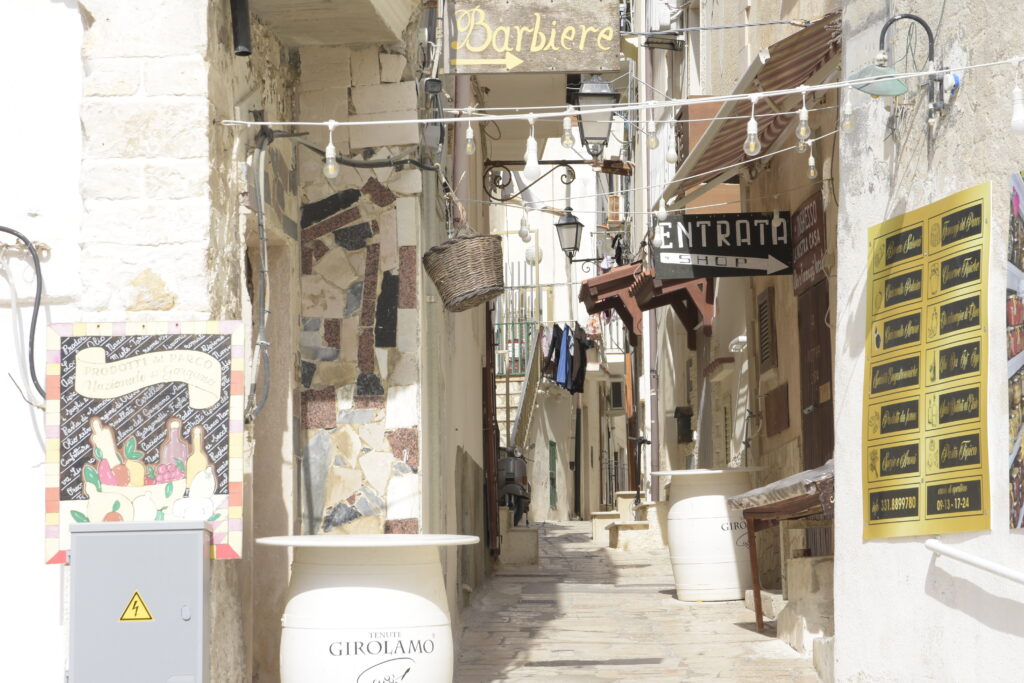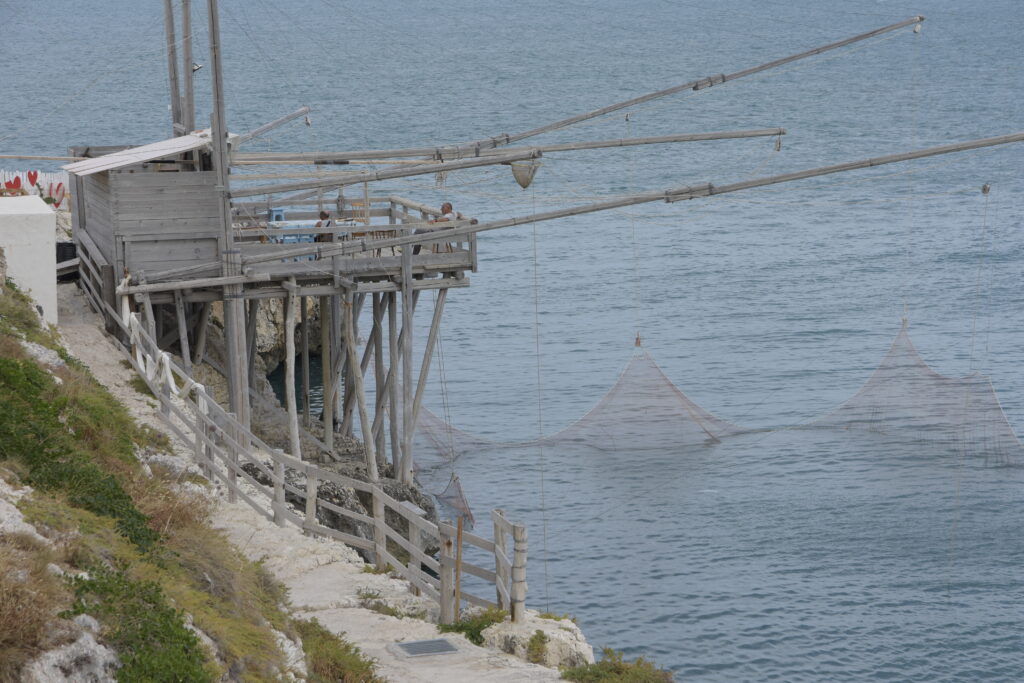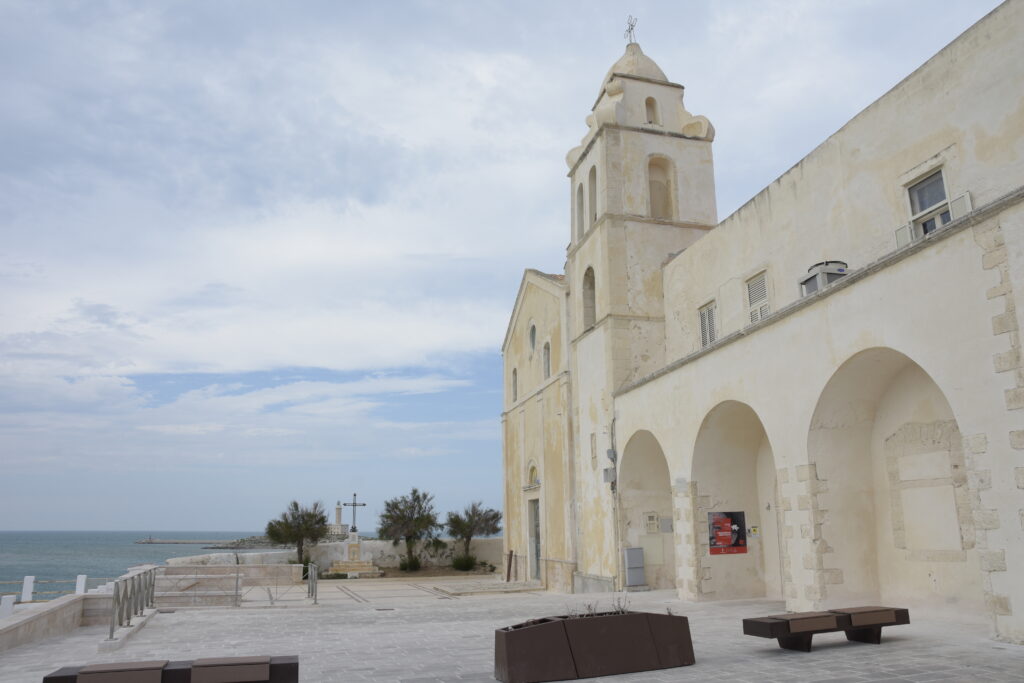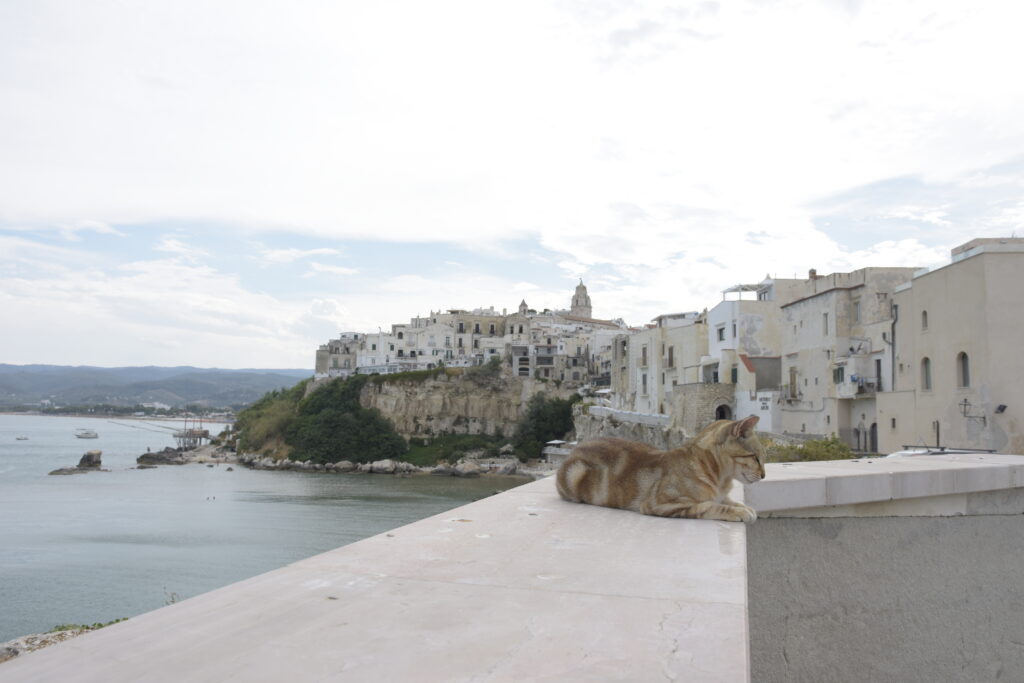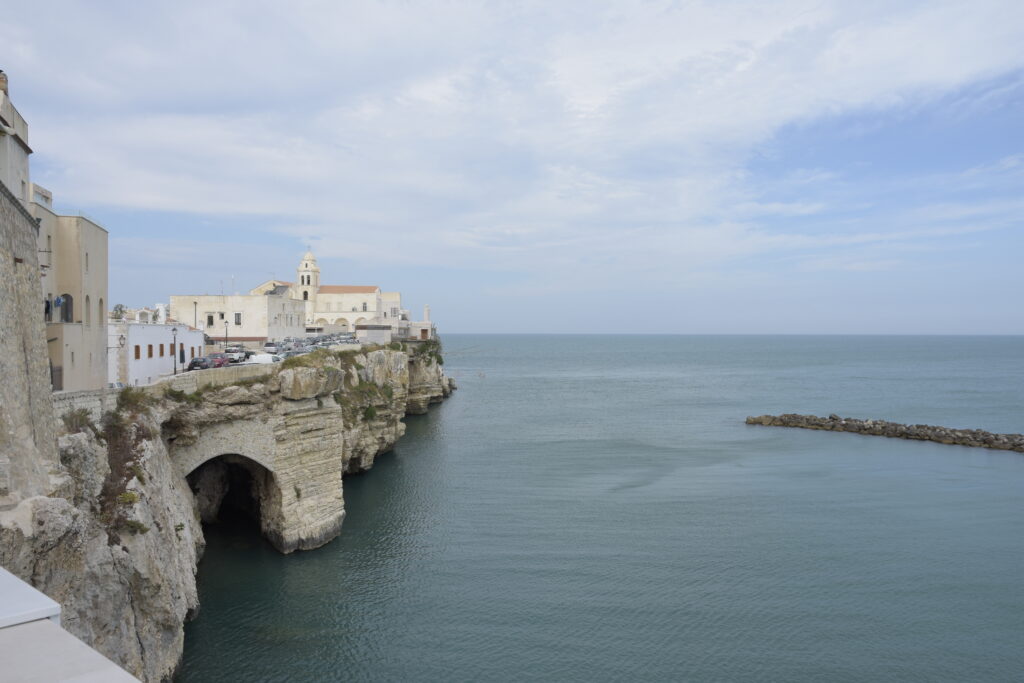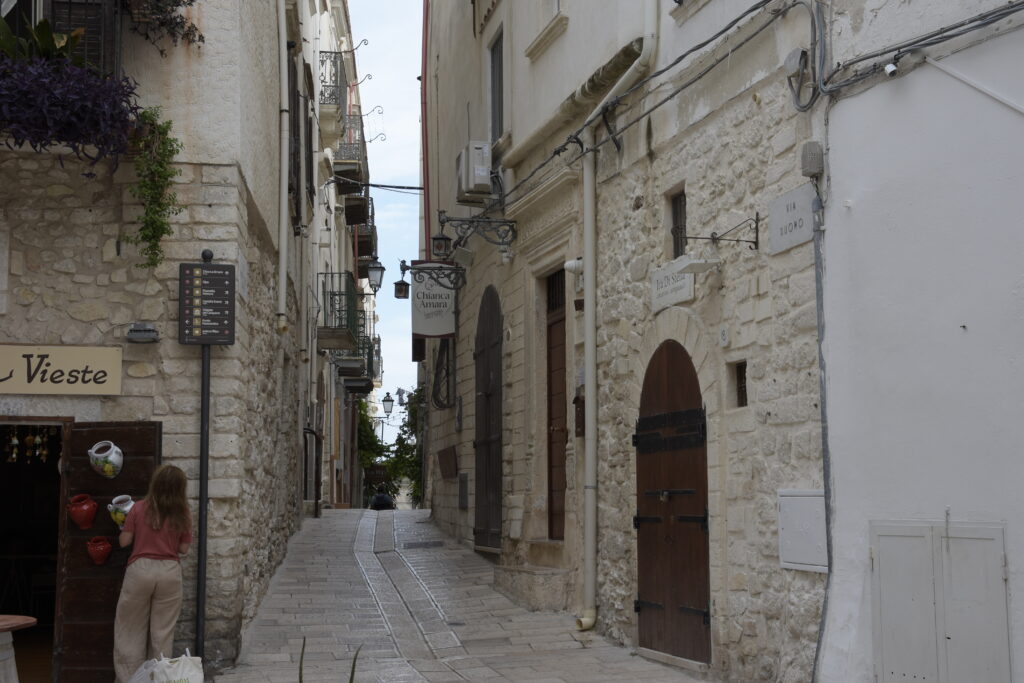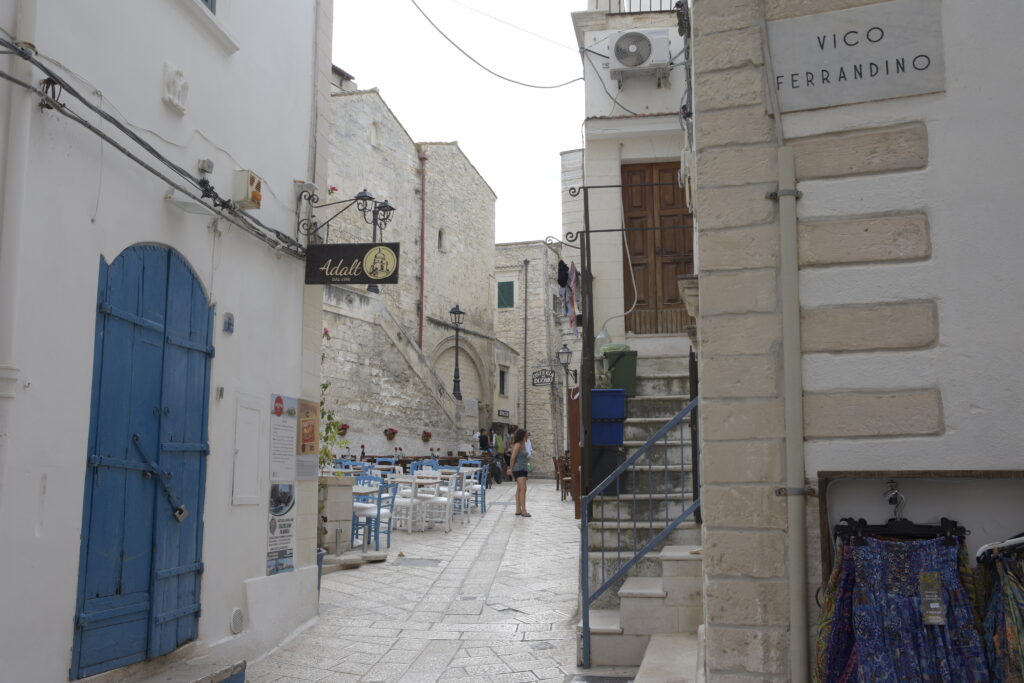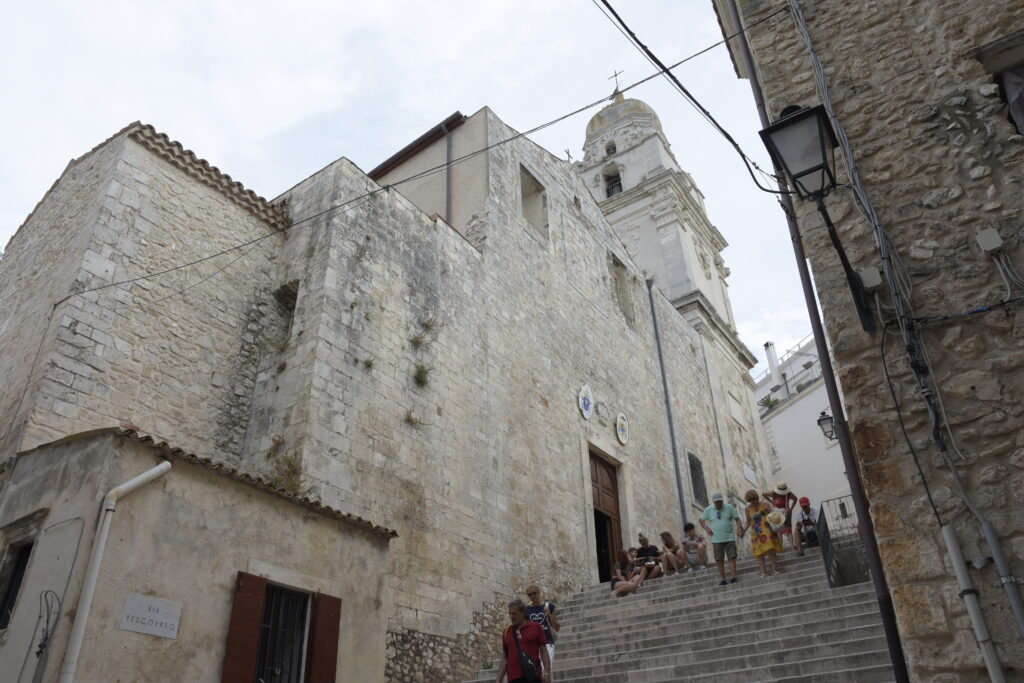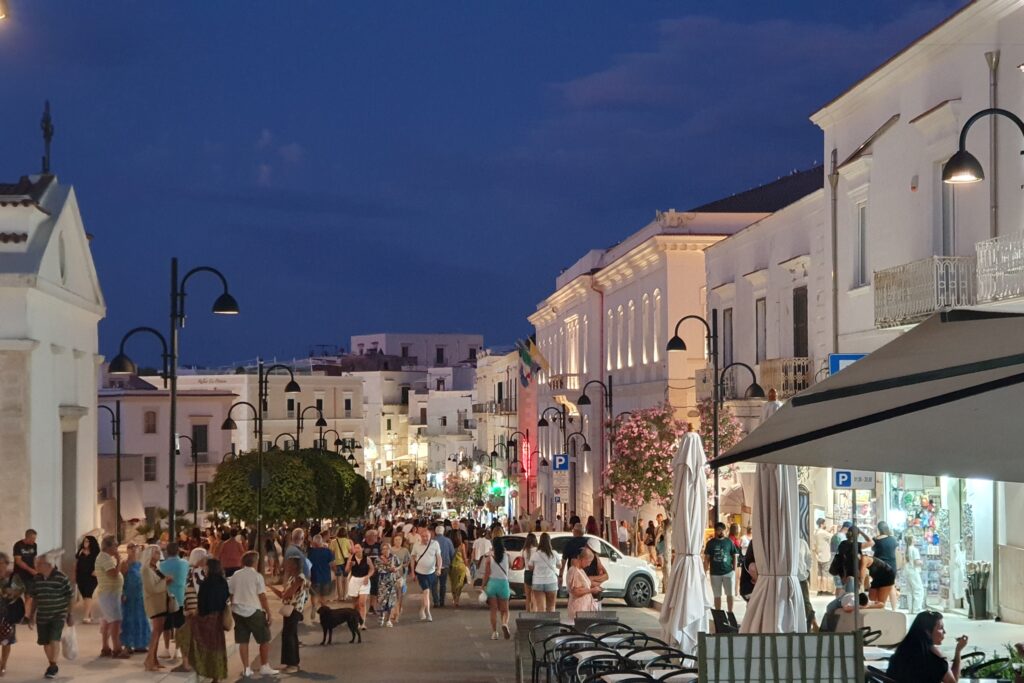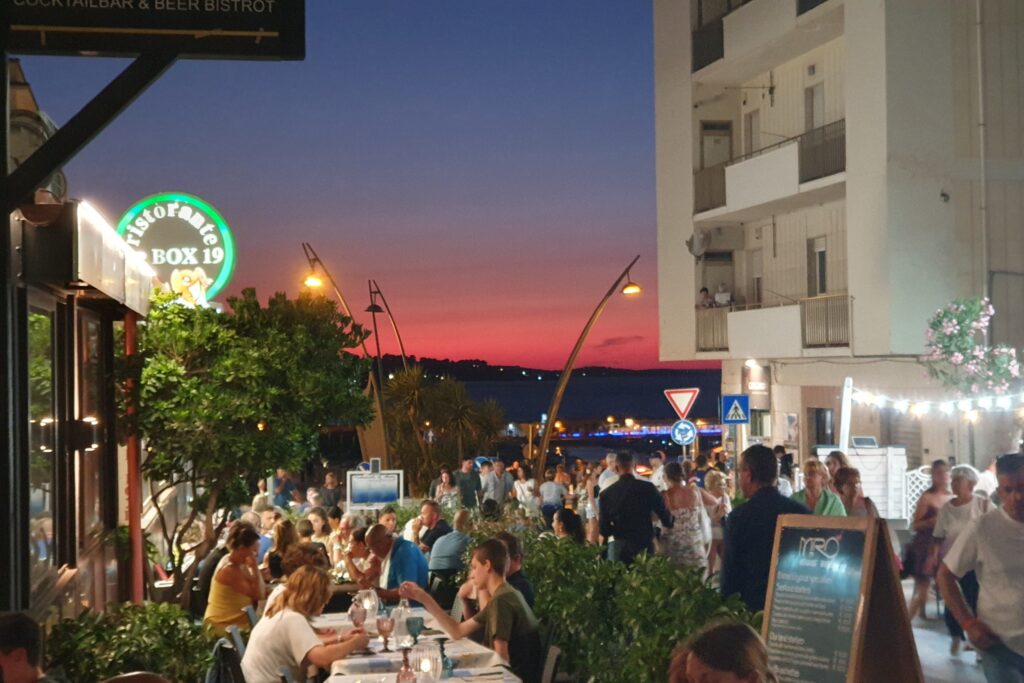Vieste

Hitzewelle
Die letzten Tage hatten wir schon durchgehend über 35° Hitze am Nachmittag, die nächsten zwei Tage – Freitag und Samstag – sollen es selbst hier im wind- und wassergekühlten Hafen von San Foca an die 40° werden. Wir werden unsere Aktivitäten reduzieren und die Drehzahl der Ventilatoren erhöhen.
Heatwave
The last few days we had already temperatures consistently above 35°C in the afternoon, and the next two days – Friday and Saturday – are expected to reach 40°C even here in the wind- and water-cooled harbour of San Foca. We will reduce our activities and increase the speed of the fans.
Lange habe ich gesucht, bis ich mich für die zwei Akku-betriebenen Ventilatoren entschieden habe. Die Werbung versprach bis 24 Stunden Laufzeit pro Akku-Ladung auf kleinster Stufe und wir haben das im Probebetrieb zuhause tatsächlich verifizieren können. Jetzt sind wir froh, dass wir wenigstens die heiße Luft in Bewegung setzen können.
Ganz Süditalien stöhnt, wie auch viele andere südeuropäische Regionen, unter der aktuellen Hitzewelle, die noch bis Sonntag andauern soll. Ab dann sollte es wieder besser werden und nur mehr knapp über 30° warm sein. Wir wollen in der Nacht von Sonntag auf Montag (27. auf 28. Juli) nach Othoni in Griechenland übersetzen.
Aber kehren wir zunächst zu unserem Besuch in der schönen Stadt Vieste an der Spitze des Gargano zurück. Ich bin ja noch zwei Stationen der Reise schuldig.
I searched for a long time before deciding on these two battery-powered fans. The advertisement promised up to 24 hours of runtime per battery charge at the lowest setting, and we were able to verify this during a trial run at home. Now we are glad that we can at least get the hot air moving.
The whole of southern Italy, like many other southern European regions, is groaning under the current heatwave, which is set to continue until Sunday. From then on, things should improve and temperatures should only reach just over 30°C. We want to cross over to Othoni in Greece on the night of Sunday to Monday (27 to 28 July).
But for now, let’s go back to our visit in the beautiful town of Vieste, at the tip of the Gargano. I still owe you two stages of the journey.
Vielleicht sollte ich einmal für unsere nautisch weniger vorgebildeten Freunde erklären, was eine „Vorwind-Kreuz“ ist: Also, bei den meisten heute gebräuchlichen Segelyachten, sind sowohl das Vorsegel als auch das Großsegel an der Vorderkante angeschlagen und wehen nach hinten aus, stehen also im Wesentlichen längs der Mittschiffslinie (im Gegensatz zu den alten Rahsegeln, die quer dazu stehen.) Das hat den Vorteil, dass sie relativ gut „am Wind“ segeln, das heißt in einem Winkel de facto gegen den Wind segeln können. Kommt der Wind jedoch von achtern, ist die Montage der Segel (von vorne nach hinten) eher hinderlich. Das Großsegel kann zwar mit dem Baum nach außen gedreht werden bis es (fast) quer zum Wind steht, aber das Vorsegel hat keinen Baum und oft schattet das Großsegel den Wind für das Vorsegel (=Genua) ab. Eine Sloop (so nennt man diese Schiffsform) segelt also schlecht vor dem Wind. Es ist daher von Vorteil, wenn man nicht direkt (=platt) vor dem Wind fährt, sondern den Wind von schräg hinten (=raumschots) bekommt. Durch wiederholtes Halsen (das Heck des Bootes geht durch den Wind) kreuzt man gewissermaßen von raumschots backbord zu raumschots steuerbord und umgekehrt. Die Strecke wird dadurch länger, was aber durch die deutlich höhere Geschwindigkeit mehr als wettgemacht wird. Je stärker der Wind weht, umso kleinere Winkel kann man fahren, aber das ist wieder eine andere Geschichte…
Perhaps I should explain what a ‘downwind tack’ is for our friends who are not familiar with nautical terms: On most sailing yachts in use today, both the headsail and the mainsail are attached to the front edge and blow backwards, meaning they are essentially aligned with the centre line of the boat (in contrast to the old square sails, which are positioned transversely to it). This has the advantage that they sail relatively well ‘close to the wind’, i.e. they can effectively sail at an angle against the wind. However, when the wind comes from astern, the arrangement of the sails (from front to back) is rather a hindrance. The mainsail can be turned outwards with the boom until it is (almost) perpendicular to the wind, but the foresail has no boom and the mainsail often shades the wind for the foresail (=genoa). A sloop (as this type of boat is called) therefore sails poorly downwind. It is therefore advantageous not to sail directly (flat) downwind, but to have the wind coming from diagonally behind (broad reach). By repeatedly jibing (the stern of the boat goes through the wind), you cross from broad reach port to broad reach starboard and vice versa, so to speak. This makes the distance longer, but this is more than compensated for by the significantly higher speed. The stronger the wind blows, the smaller the angle you can sail, but that’s another story…
Wenn man sich die italienische Halbinsel als Stiefel vorstellt, dann wäre der Gargano der Sporn. Und an der Spitze des Sporns liegt Vieste. Unsere Strecke von Rodi Garganico wäre nur 15,5 Seemeilen lang gewesen, wenn uns der leichte Nordwestwind nicht zu einer „Vorwindkreuz“ veranlasst hätte. Die Wetterverhältnisse waren sommerlich ruhig und wir konnten ausschlafen und in aller Ruhe Frühstücken. Am Ende waren es dann knapp über 20 Seemeilen, die wir in genau vier Stunden bewältigt haben.
Daher waren wir um halb vier schon in der Marina und konnten es uns gemütlich machen. Zum Abendessen waren wir in einem kleinen Bistro und aßen Lasagne bzw. Parmigiano Melanzane zu einem kühlen Nastro Azzurro.
If you imagine the Italian peninsula as a boot, then Gargano would be the spur. And at the tip of the spur lies Vieste. Our route from Rodi Garganico would have been only 15.5 nautical miles long if the light north-westerly wind had not caused us to tack downwind. The weather conditions were calm and summery, so we were able to sleep in and enjoy a leisurely breakfast. In the end, we covered just over 20 nautical miles in exactly four hours.
This meant we were back at the marina by half past three and could settle in for the evening. We had dinner at a small bistro, where we enjoyed lasagne and parmigiano melanzane accompanied by a cool Nastro Azzurro.
Panorama von Vieste (zum Vergößern anklicken!)
Panoramic view of Vieste (click to enlarge!)
Vieste präsentiert sich mit einem eigenen Charakter: Großartiger als das beschauliche Rodi Garganico, touristischer als das lebenslustige Termoli, ganz dem Meer zugewandt und mit einer prächtigen Altstadt, in der an fast jeder Ecke ein Andenkenladen zum Kauf animieren möchte. Immerhin haben wir gedruckte Ansichtskarten gefunden und nach Hause geschickt – wie es sich für Touristen gehört.
Nachdem wir nun schon fast einen Monat unterwegs sind, wollen wir uns hier nicht lange aufhalten. Am zweiten Tag waschen wir unsere Wäsche (es war auch schon dringend nötig) und machen am Nachmittag einen Spaziergang durch die Altstadt. Nach dem Abendessen an Bord drehen wir noch eine Runde am „Corso“ und mischen uns unter die flanierenden Massen. Morgen steht wieder eine 24-Stunden-Fahrt auf dem Programm, wir wollen direkt von hier nach Brindisi, ca. 120 Seemeilen entfernt.
Vieste has its own unique character: more magnificent than the tranquil Rodi Garganico, more touristy than the lively Termoli, facing the sea and with a magnificent old town where souvenir shops tempt you to buy something at almost every corner. At least we found some picture postcards and sent them home –
as tourists are supposed to do.
Now that we have been travelling for almost a month, we don’t want to stay here too long. On the second day, we do our laundry (it was urgently needed) and take a walk through the old town in the afternoon. After dinner on board, we take a stroll along the ‘Corso’ and mingle with the crowds of people out for a walk. Tomorrow, we have another 24-hour trip planned, as we want to sail directly from here to Brindisi, about 120 nautical miles away.
Bildergalerie (Zum Starten anklicken)
Photo gallery (Click to start the slideshow)
Die Draufgänger von Vieste
The Daredevils of Vieste
Fußnote:
Nachdem es in den Marinas nicht immer brauchbares W-LAN gibt und wir auch nicht immer die Zeit finden, alle aktuellen Ereignisse zeitnah im Blog zu verarbeiten, mag es sich lohnen, immer wieder auf frühere Beiträge zurückzukommen – es könnte zusätzliche Inhalte zu betrachten geben.
Footnote:
Since useable Wi-Fi is not always available in marinas, and we don’t always have time to post all the latest news on the blog in a timely manner, it may be worth checking back through previous posts – there may be additional content to view.


